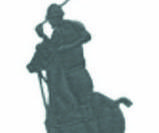Polo gains partial victory
Dale Carter believes too narrow a view was taken. B 2 569 773, The Polo/Lauren Company v Luigi Civile, EUIPO, 12th March 2020.

The EUIPO Opposition Division (OD) refused registration of the Contested Sign for various types of protective headgear in class 9 and leather goods and bags in class 18 following an opposition from The Polo/Lauren Company (the Opponent). However, the opposition failed in respect of various types of safety equipment in class 9 and “gut for sausages” in class 18. The opposition was based on Articles 8(1)(b), 8(4) and 8(5) EUTMR, but was decided under 8(5) and 8(1)(b).

The OD led its assessment of the opposition based on Article 8(5) for the Opponent’s second pleaded mark. That registration had a reputation for bags and wallets in class 18 and clothing, footwear and headgear in class 25, arising in part from the Opponent’s fashion products, as well as its sponsorship of various sporting events, including via branded clothing.
The OD found the marks similar and that a link would arise for certain goods, but not others. For example, a connection was found between the Opponent’s headgear and the Applicant’s protective headgear. The rationale put forward was that protective headgear could relate to sport, and consumers of sports equipment may overlap with consumers of the Opponent’s clothing. Where a plausible connection existed between goods, the OD found that unfair advantage would be taken of the Opponent’s mark.
However, the OD found that there was no connection between Opponent’s reputed goods and the Applicant’s safety, rescue and life-saving apparatus because such items would not relate to the “fashion sector”. A plausible connection existed between the Opponent’s reputed goods and the Applicant’s class 18 goods because the contested goods were fashion accessories, or raw materials for fashion accessories.

For the goods surviving the Article 8(5) opposition ground, the OD went on to assess a likelihood of confusion vis-à-vis the Opponent’s first and fourth pleaded marks. As regards the first, no likelihood of confusion was found because the goods were deemed dissimilar. Despite there being some identical and similar goods in play for the fourth mark, there was no likelihood of confusion because the marks were deemed distinguishable.
Ultimately, this decision reminds us that although Article 8(5) applies to dissimilar goods, there is no guarantee that a reputed mark can be successfully enforced against all goods. There must be a plausible connection between the goods to enable consumers to associate the marks and for this to give rise to damage.
Here, the OD appears to have applied Article 8(5) relatively narrowly, confining the “connection” between goods in classes 9 and 25 to categories for which there is an overlap in producers, distribution channels and the relevant public. Arguably, the OD should have upheld the opposition under Article 8(5) in respect of the Applicant’s “safety apparatus [for protection against accident or injury]” where these could be used in a sports setting.
Despite citing a number of earlier decisions relating to figurative “Polo” marks of a similar nature, the OD seems to have tried to distance itself from those earlier decisions. Perhaps this is why it considered it appropriate, in this instance, to apply
Article 8(5) relatively narrowly.
Key points
- As a ground of opposition, Article 8(5) EUTMR is not certain to prevail against all goods and services. There must be a plausible connection between the goods and services for a link to be established
- The OD may choose to assess an evidence-heavy opposition ground first, despite there being alternative grounds which do not require evidence to be considered
- The EUIPO is not bound by its previous decisions


